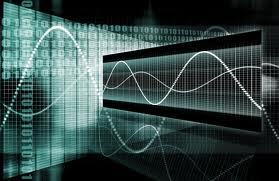A team of researchers led by Claes Strannegård at the University of Gothenburg, designs a software that uses mixture of logic and ‘human-like’ thinking, the same types of patterns that humans can see.
The program uses a mixture of mathematical logic and ‘human-like’ thinking, enabling it to outperform previous software on IQ tests.
It can spot ‘patterns’ in any information that has a human component, such as financial data.
IQ tests are based on two types of problems, seeing visual patterns and guessing number sequences.
The group has improved the program that specializes in number sequences to the point where its score implies an IQ of at least 150.
The current programs are beating the conventional math programs because they are combining mathematics and psychology.
They have integrated a mathematical model that models human-like thinking to achieve higher scores than previous software.
A computer has become the first to be classed as a ‘genius’ after scoring 150 in an IQ test.
The average score for people is 100. A score of 150 ranks the artificial intelligence program among the top four per cent of humans. Even advanced maths program usually score below 100.
According to Strannegård, the lead designer of the program, the software is good only in identifying patterns on data with a psychological component, such as financial data, but it is not as good at finding patterns in more science type like the weather data.
